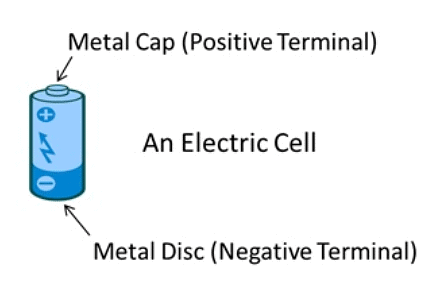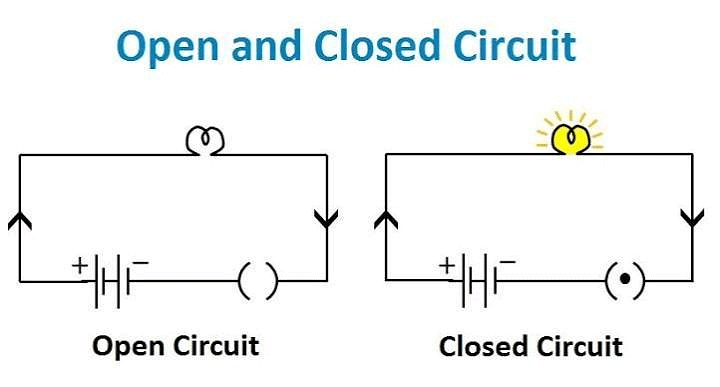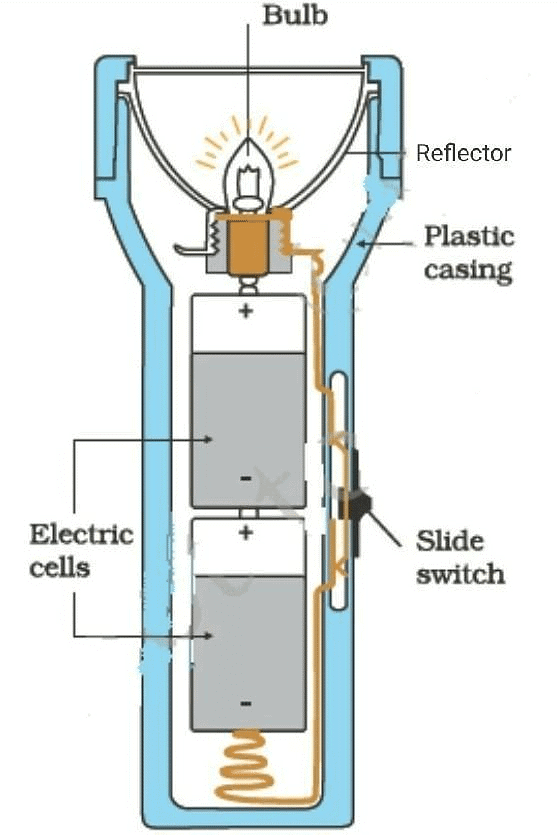Grade 5 Exam > Grade 5 Notes > Science for Grade 5 > NCERT Summary: Electricity & Circuits
NCERT Summary: Electricity & Circuits | Science for Grade 5 PDF Download
Electricity
- It is a set of physical phenomena which involves an electrical charge.
What causes an electrical charge?
It is caused by an imbalance in positive or negative charge.
Source of electrical energy
- Electrical energy is available to us from electric power houses, domestic generators, dry cells and batteries.

Electric current
- It is a flow of electric charges, these electric current flows in one direction only.
- Examples: oven, room heater, ceiling fan and electric bulb work when an electric current flows through them.
Source of electric current
- It is a device which is used to produce an electric current is called a source of electric current.
- Common sources of electric current are cells and batteries which comes in various shapes and sizes and electric current that we get from plug points in houses.
Question for NCERT Summary: Electricity & CircuitsTry yourself: What is the source of electrical energy?View Solution
Flow of electric current
- Cell, battery or a plug point acting as a source.
- Copper, silver or aluminium wires allow electric current flow easily.
- An unbroken loop (of the wire) running from one terminal of the source, through various appliances, back to the other terminal of the source.
Electric circuit
- It provides a path through which electricity travels from one terminal of the cell through the bulb and back to the other terminal of the cell is called electric circuit.
Examples
Some electric circuits in the natural world
- Nerves in our body create electric circuit
- Lightning, clouds and planet earth form an electric circuit
Some man- made electric circuits are
- Wiring that lights our house
- Car battery, ignition switch and starter in a car.
Type of circuits
- Closed circuits
- It is unbroken path travelled by electricity is known as a closed circuit it is also known as complete circuit.
- If the circuit is complete or closed, the bulb lights up.
- The direction of flow of electricity is from the positive terminal of the cell to the negative terminal of the cell.
- Open circuits
- It is broken path by which electricity cannot pass is known as open circuit also known as incomplete body.
- A bulb will not light up if there is a gap in circuit. If the circuit is open the bulb will not light up.

Component of electricity
- Connecting wires: It helps to conduct the electric current and complete the circuit.
- Bulb: when circuit is complete the lights up.

- Battery: it is a series combination of two or more cells.
- Switch: a switch works by breaking or completing the circuit path.
(i) Switch on: The circuit path is complete.
(ii) Switch off: the circuit path is broken. - Electric cell or dry cell
(i) An electric cell has two terminals; one is called positive while the other is negative.
(ii) Inside the electric cell, the electric charges flows from negative terminal to the positive terminal.
(iii) Connecting wires, bulb, switch and electric cell is used in torch, battery, LED etc.

Question for NCERT Summary: Electricity & CircuitsTry yourself:Which of the following materials allows electric current to flow easily?
View Solution
Conductor and insulator
- Conductor
- Materials which allow electric current passes through it, is known as conductor.
- All metals are good conductor, only non-metal which is good conductor for electricity is carbon.
- A few non-metals like graphite (pencil lead is made of graphite) are also conductors of electricity.
- Insulator
- Materials which do not allow electric current passes through it.
- Examples: plastic, elastic etc.
- The handles of screwdrivers and testers used by electricians are usually made of wood or hard plastic.
The document NCERT Summary: Electricity & Circuits | Science for Grade 5 is a part of the Grade 5 Course Science for Grade 5.
All you need of Grade 5 at this link: Grade 5
|
20 videos|72 docs|17 tests
|
FAQs on NCERT Summary: Electricity & Circuits - Science for Grade 5
| 1. What is electricity? |  |
Ans. Electricity is a form of energy resulting from the movement of charged particles, such as electrons. It is a fundamental force of nature that powers various electrical appliances and devices.
| 2. What are circuits and how do they work? |  |
Ans. A circuit is a closed loop or path through which electric current can flow. It typically consists of a power source (such as a battery), conductive wires, and various components (such as resistors, capacitors, and switches). When the circuit is complete, the flow of electrons creates an electric current, allowing the circuit to work.
| 3. How does electricity impact our daily lives? |  |
Ans. Electricity plays a crucial role in our daily lives. It powers our homes, businesses, and industries, allowing us to have lighting, heating, cooling, and access to various electrical appliances. It also drives technological advancements, such as computers, smartphones, and electric vehicles, which have become an integral part of modern society.
| 4. What are the safety precautions to consider while dealing with electricity? |  |
Ans. When dealing with electricity, it is important to follow safety precautions to prevent accidents and injuries. Some essential safety measures include:
- Avoiding contact with live wires and electrical equipment without proper insulation.
- Using circuit breakers and fuses to protect against overloading and short circuits.
- Turning off the power supply before working on electrical installations or repairs.
- Using appropriate protective gear, such as insulated gloves and goggles, when necessary.
- Keeping electrical cords and devices away from water sources to avoid electric shocks.
| 5. What are the different types of circuits? |  |
Ans. There are three main types of circuits:
- Series circuit: In a series circuit, the components are connected in a single path, so the current flows through each component sequentially. If one component breaks or is disconnected, the entire circuit will be interrupted.
- Parallel circuit: In a parallel circuit, the components are connected in multiple paths, so the current can flow through each component independently. If one component breaks or is disconnected, the other components will continue to work.
- Combination circuit: A combination circuit is a mix of series and parallel circuits. It contains both series and parallel connections to accommodate different electrical requirements.
Related Searches

















